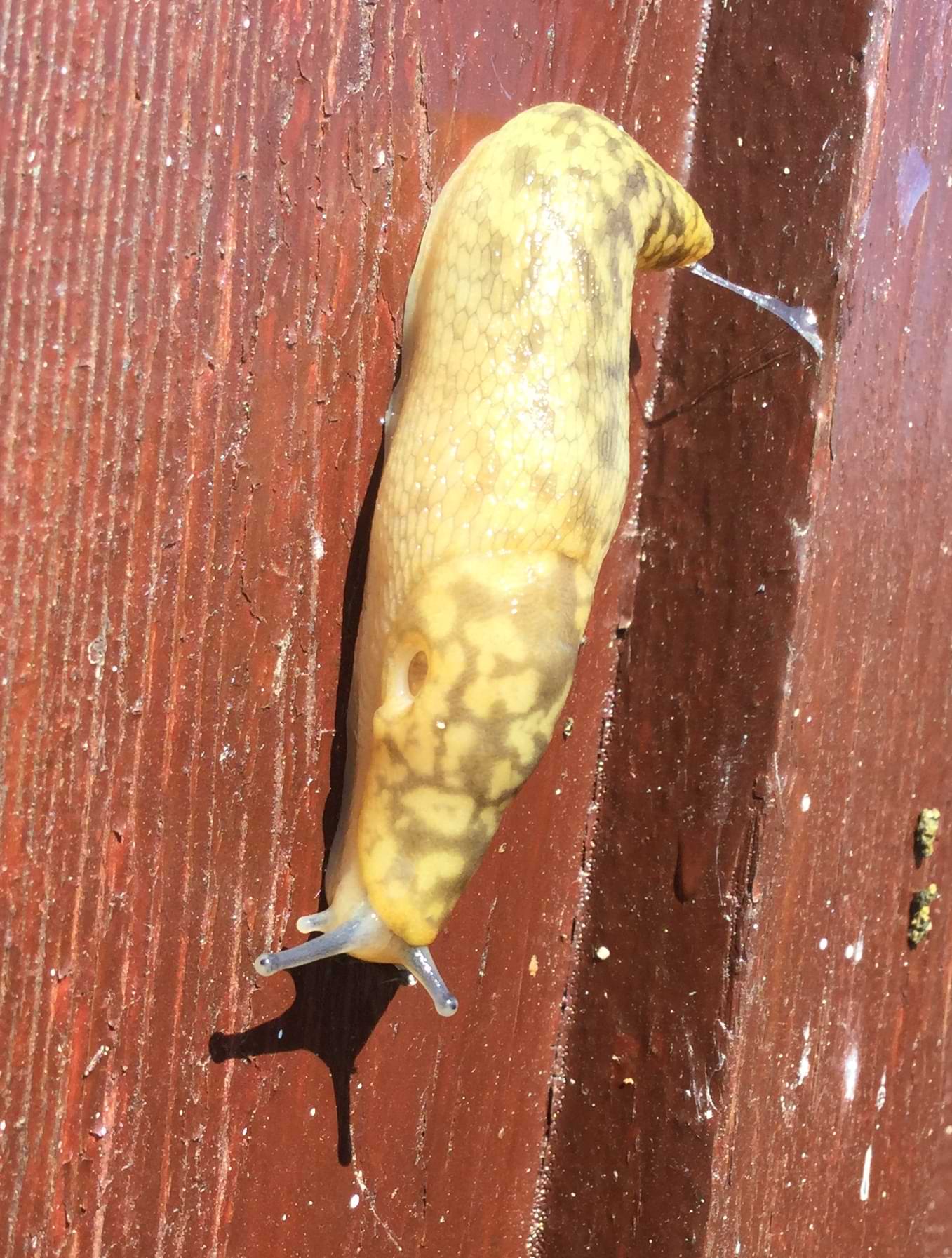End of Summer Wrap Up
It's late September and has suddenly gotten very cold so it's time wrap up the Bug Blog for the summer. There will be a few more posts in the autumn but I imagine things will be slowing down from now on.
This first section has a bunch of beetles. I had planned to make a separate post dedicated just to beetles, but due to the rainy weather in July I didn't get to see many of them.
This beetle had found its way into the food waste bin and was happily munching away on apple cores and leftover pasta. I don't see large beetles very often so finding this one in the trash was a welcome surprise! They looked like a standard black beetle at first but in the sunlight the carapace took on a brilliant bronze colour, and their legs turned a crimson red. Very cool to see.

As to what species they are... I don't know. This is my first time attempting to identify beetles and it's difficult, most of these guys look identical! Our trash beetle is somewhere within the Amara family perhaps.
Next we have a thick-legged flower beetle (Oedemera nobilis). He was beautifully iridescent and green, but my camera hasn't captured that particularly well so be sure to look up other images of this species!
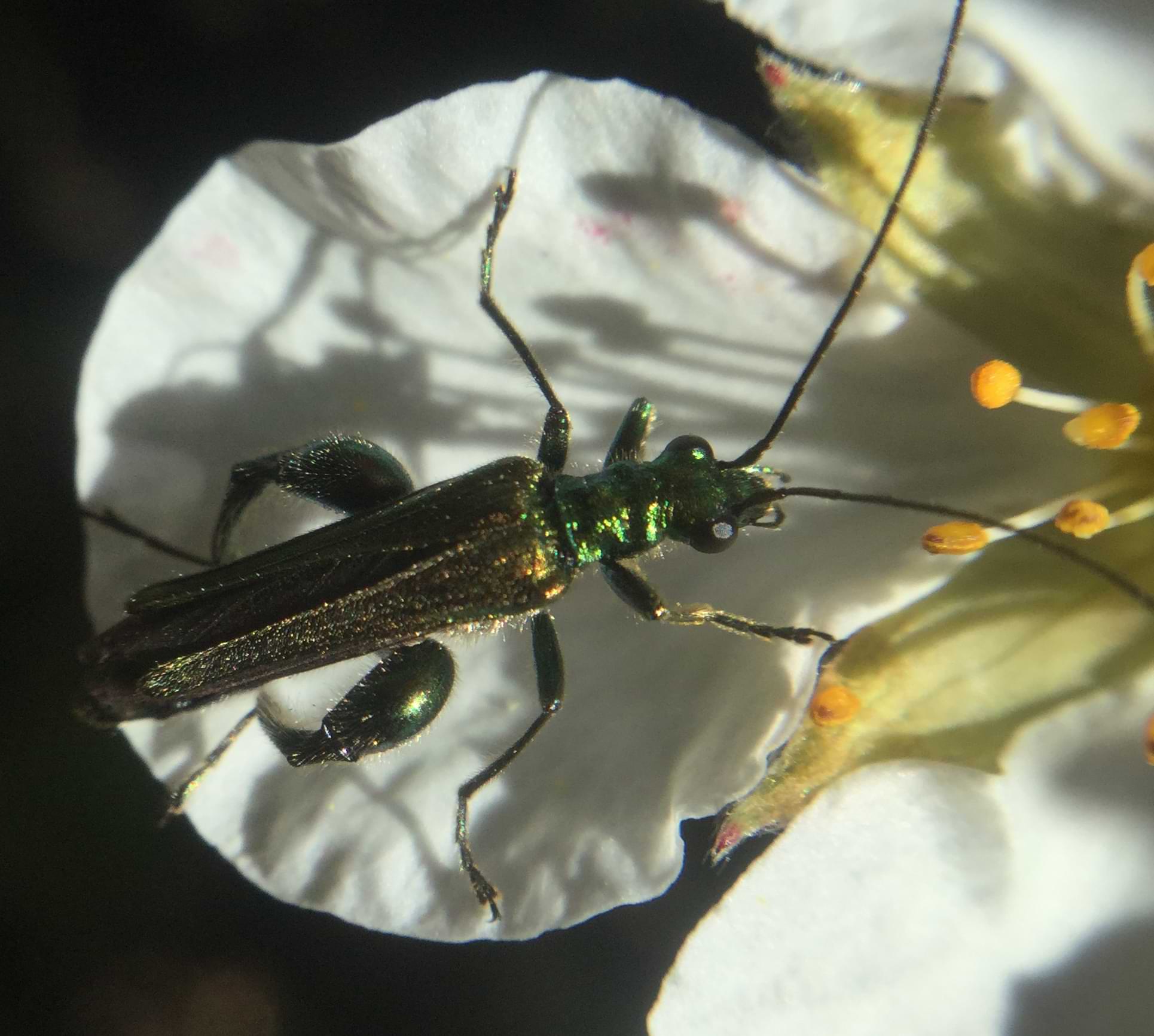
I'm fairly sure this is a carpet beetle! They're called carpet beetles because they can occasionally be found indoors eating the fibres from rugs and carpets, but it's fitting that their wing casing also has the mottled texture of an old hotel's floor.

This bug has the absolutely rad name of the Mealybug Destroyer Beetle!! They're a type of ladybird but in their larval form they closely mimic mealybugs, allowing them to feast on the scale insects without raising suspicion.
From what I can tell, these beetles (and the insects they mimic) aren't native to the UK but are often imported from Australia as a kind of biological pest control. For the most part we don't have to worry about invasive species here so hopefully this guy isn't causing any problems to the local food chain.

I've included this second image here because at one point the larvae got attacked by an ant, causing some of the waxy secretions on its back to get torn off. It's probably just some dirt that got stuck to their head, but I can't help reading their facial expression as having cartoon angry eyebrows — perhaps they weren't too happy about their ant encounter.
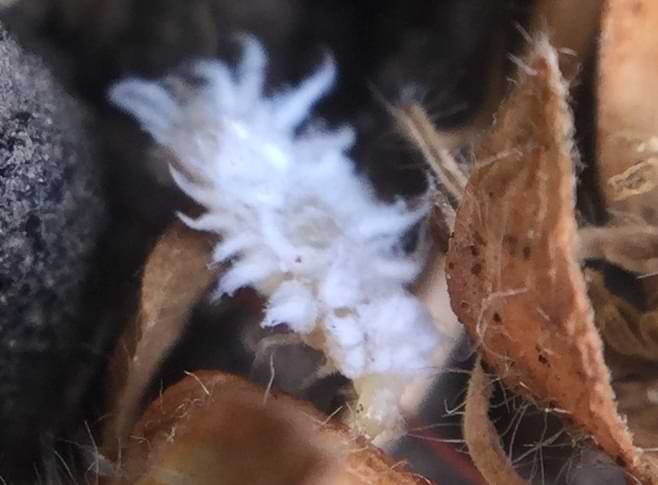
I took this photo early on in the summer so I imagine this is a fairly young grasshopper. Rather than having a larval and pupal stage, grasshoppers go through a process called partial metamorphosis, emerging from their eggs looking mostly like their adult stages and repeatedly moulting until their wings are developed enough to fly. As it moults its body should also turn a darker green rather than the pale colour you see here.
Grasshoppers are pretty angular bugs which made it hard for the macro lense to focus, but it did get nice look at their spiny foreleg and clawed toes. Very cute.
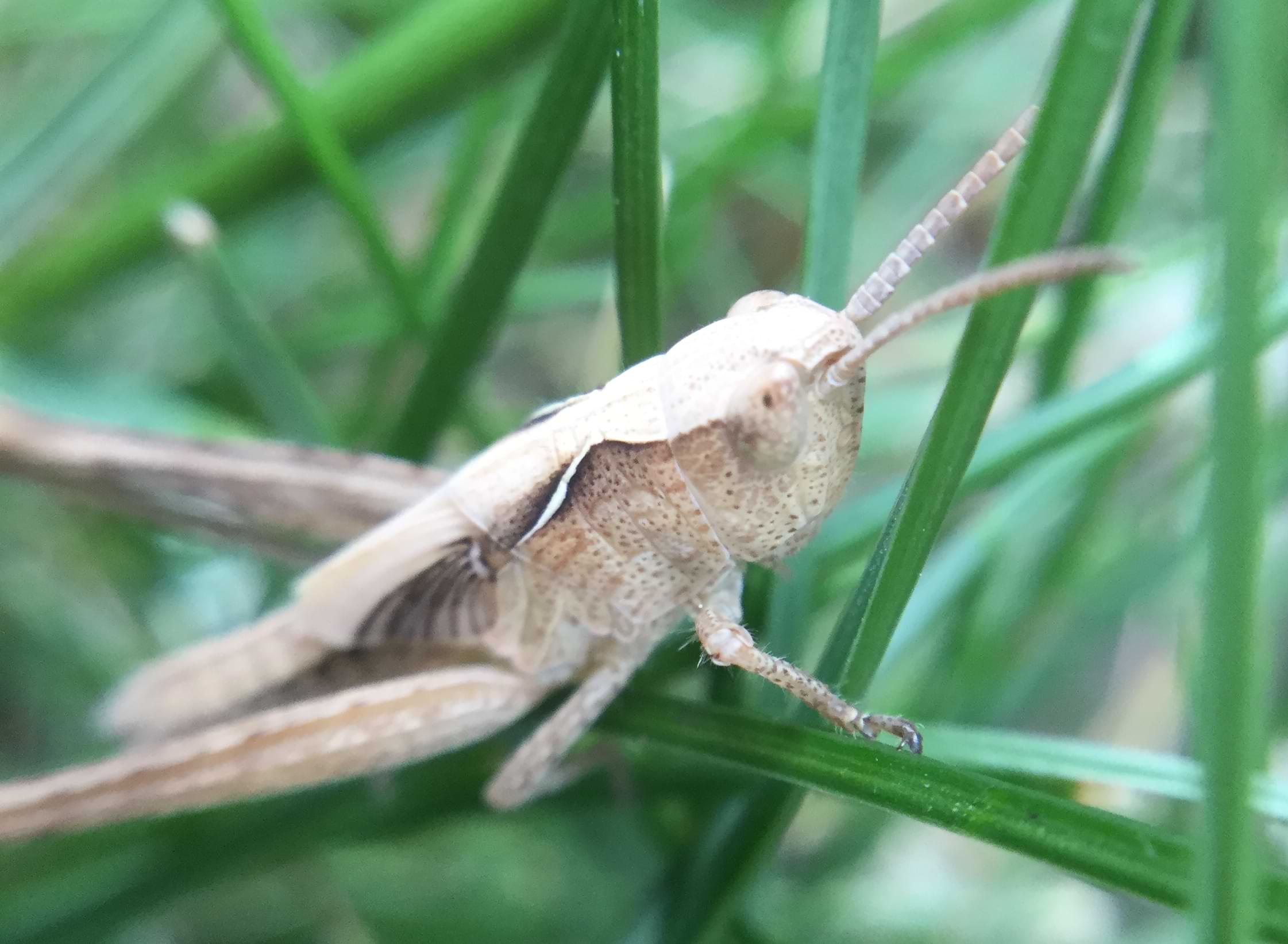
This is the only dragonfly photo I got this year and it's not a great one, but I wanted to include it because immediately after taking this image the dragonfly flew off and then landed right back down onto the edge of my phone. These guys are very pretty up close!

Undoubtedly the highlight of late summer was this HUGE FAT SLUG. I knew we have these kinds of slug in the UK, but I've simply never seen one before — most of the common slugs around here are tiny soil slugs.
I can't quite identify what this one is, my closest guess is the Irish Yellow Slug (Limacus maculatus) but those can vary dramatically in terms of colour and markings so it's hard to tell for sure. Nonetheless the markings on this one are beautiful, like a spoiled banana.
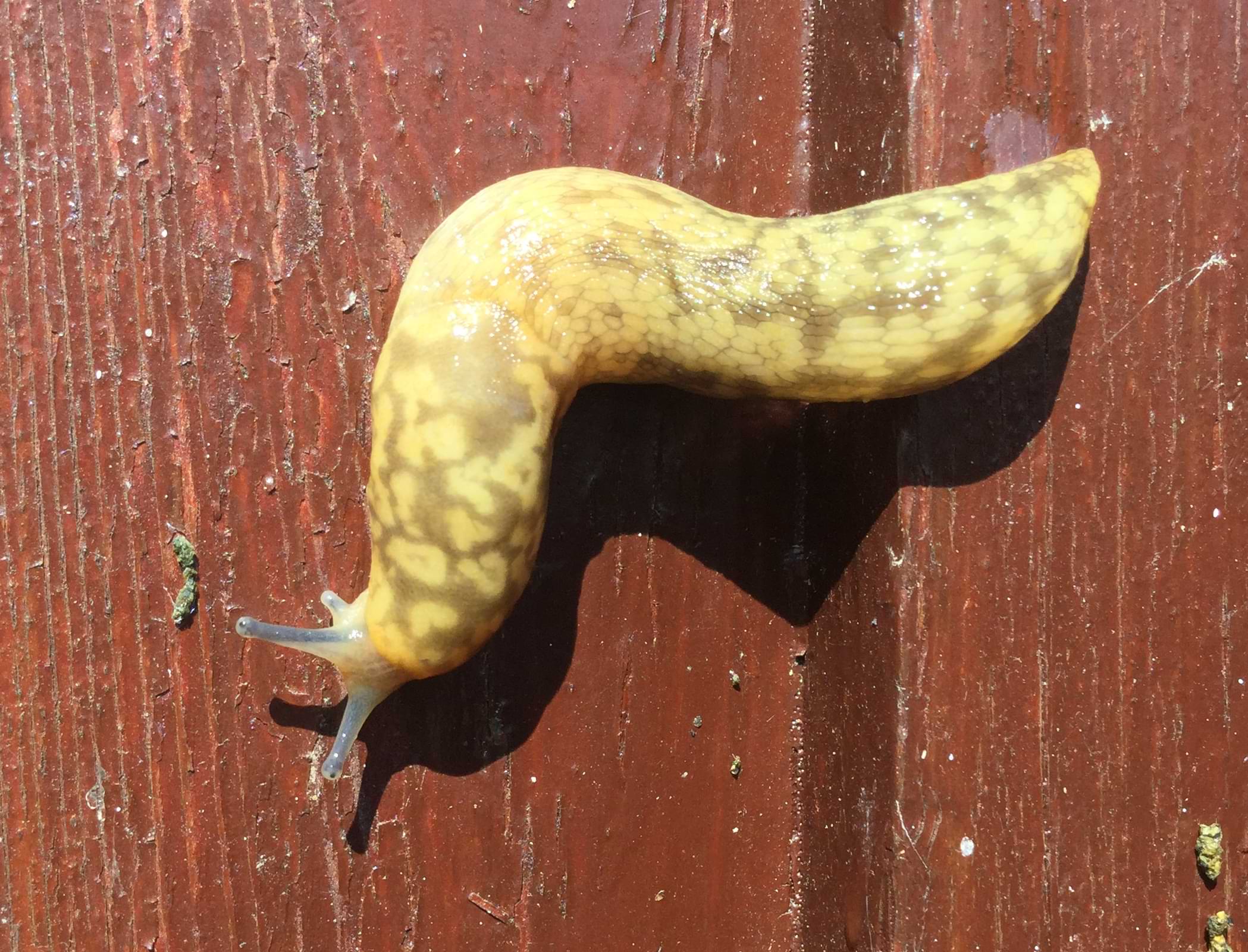
This guy was gliding around in direct sunlight on one of the hottest days of the year, so I held up a parasol for a few minutes to avoid them baking to death. Hopefully it managed to safely get into the shade.
